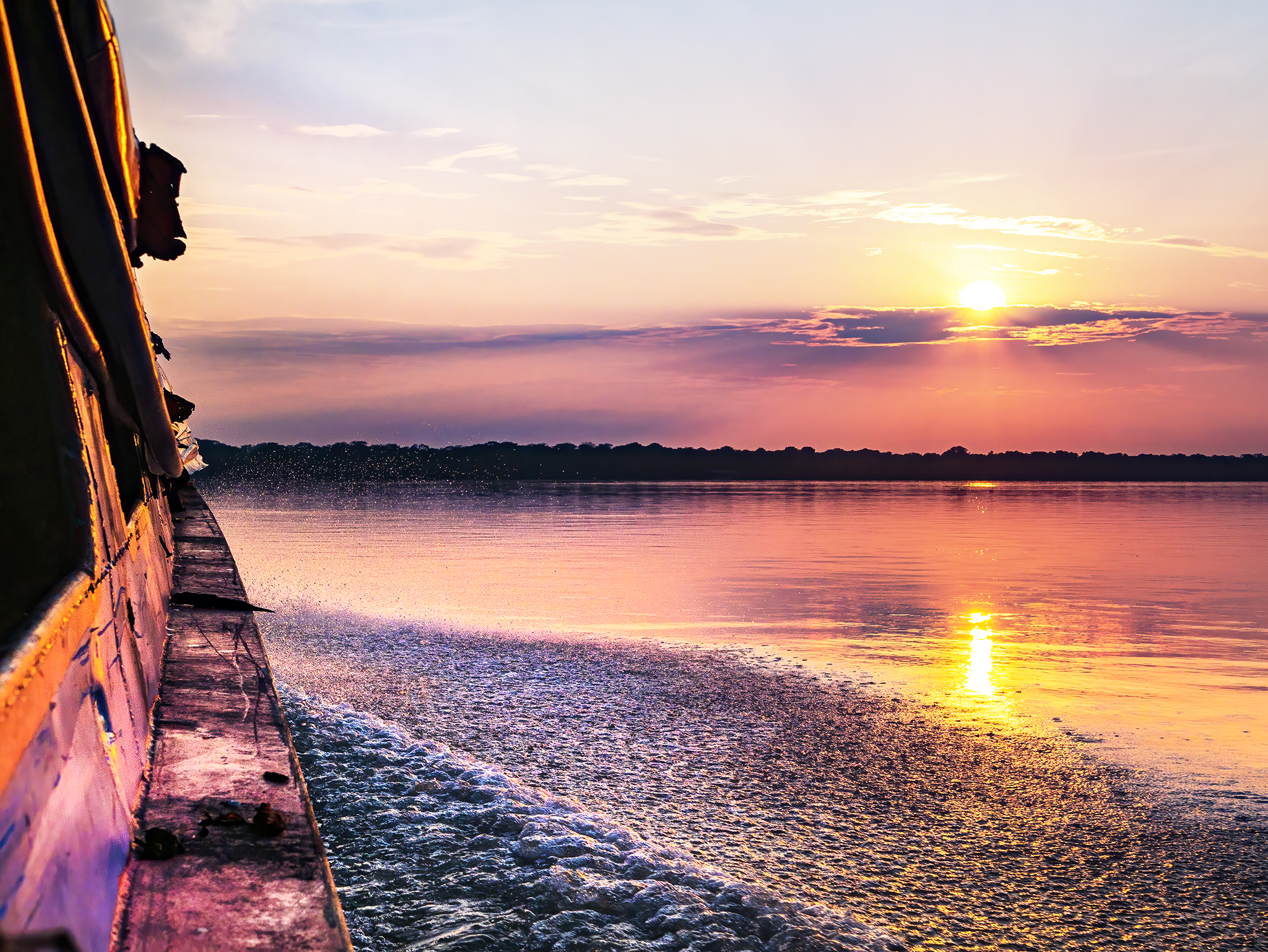The Amazon River has always held a mythical place in my heart. I remember reading about it as a small child, never imagining that one day I would explore it myself. It was a place of mystery, of remoteness, of danger. Over the last few weeks, as I’ve travelled the length of the Peruvian portion of the river, some aspects have lived up to expectation, while others have proved elucidating.
Undoubtedly the feature that stood out the most was the river’s unfathomable size. However, illusions of ‘remoteness’ were quickly dispelled. While there are still parts of the Amazon Basin that are pristine and untouched, the Amazon River itself is today better thought of as a huge aquatic highway. Iquitos is the largest city in the world not accessible by road, and a large portion of the resources consumed by its 500,000 inhabitants are transported from the mainland by river.

I rode a multi-tiered cargo boat for 26 hours from Lagunas to Iquitos. It had humans inhabiting the middle level, cradled by hammocks that stretched from one side of the boat to the other. Below deck, the storage area was stocked full of food – from fresh fruit and vegetables, to rice and legumes. Finally, the roof housed hundreds of chickens, cramped by the dozen into tiny crates. Throughout the journey, the boat stopped at countless communities to deliver supplies, making for a restless sleep as hordes of hens were dragged past you at all hours of the night.
But despite the extensive human impact, the Amazon River remains a vibrant hub of biodiversity for now. Pink dolphins breach its surface for the briefest of moments, making you question your own eyes; hungry kingfishers and egrets pluck a meal from the abundant supply of fish; and enormous reptiles – caiman and anaconda – can still be spotted if the mythical river deems you lucky enough.
While much of its folkloric mystery has been dispelled by the ‘progress’ of humanity, the Amazon River is still one of the world’s true natural wonders, and its pure immensity means that it will endure as an incredible destination for many years to come.

Alright, now that we’ve got the sentimental stuff out of the way. It’s time for some hardcore facts. I want to do my best to give you an idea of just how mighty this mighty river is.
We all know the Amazon is big, but the fact that it’s the largest and longest river in the world means that visitors to it have no frame of reference for its enormity. I was there at low water, and certain areas still bordered on oceanic. At high water, there are many spots where it’s impossible to see from one bank to the other.

Here’s a few mindboggling stats. The Amazon is around 6,700km long – about the same distance as a RETURN trip from Sydney to Perth, Las Vegas to Washington DC, or Madrid to Moscow. On average, it discharges 219,000 cubic metres of water per second into the Atlantic Ocean – that’s almost 100 Olympic-sized swimming pools every SECOND. If you took the surface area of all the rivers in the world, the Amazon would account for more than a quarter of that total area. And at high water, there are places where the river reaches 100km in width, and more than 100m in depth.
And it’s not just the river itself that’s impressive, but also the creatures who live in it. The Amazon and its tributaries are home to more than 3,000 known species of freshwater fish, more than double the number of species in Europe and North America combined. One species, the Arapaima (or Paiche) is utterly monstrous – growing up to three metres in length and weighing over 200kg. Additionally, the river houses pink dolphins, giant manatees, electric eels and even the occasional bull shark (one was found in Iquitos, more than 1,000km from the ocean).
The Amazon River is utterly mindblowing by just about any measure, and was a true privilege to experience first-hand.
–
Sunrise over the Amazon River, Peru 🇵🇪


